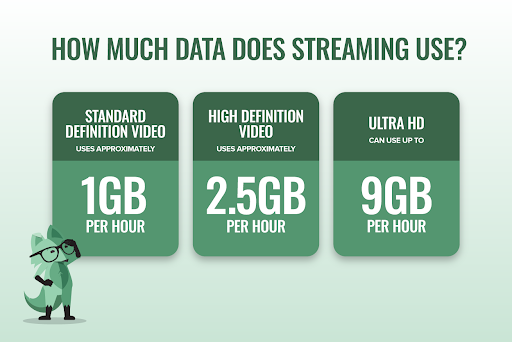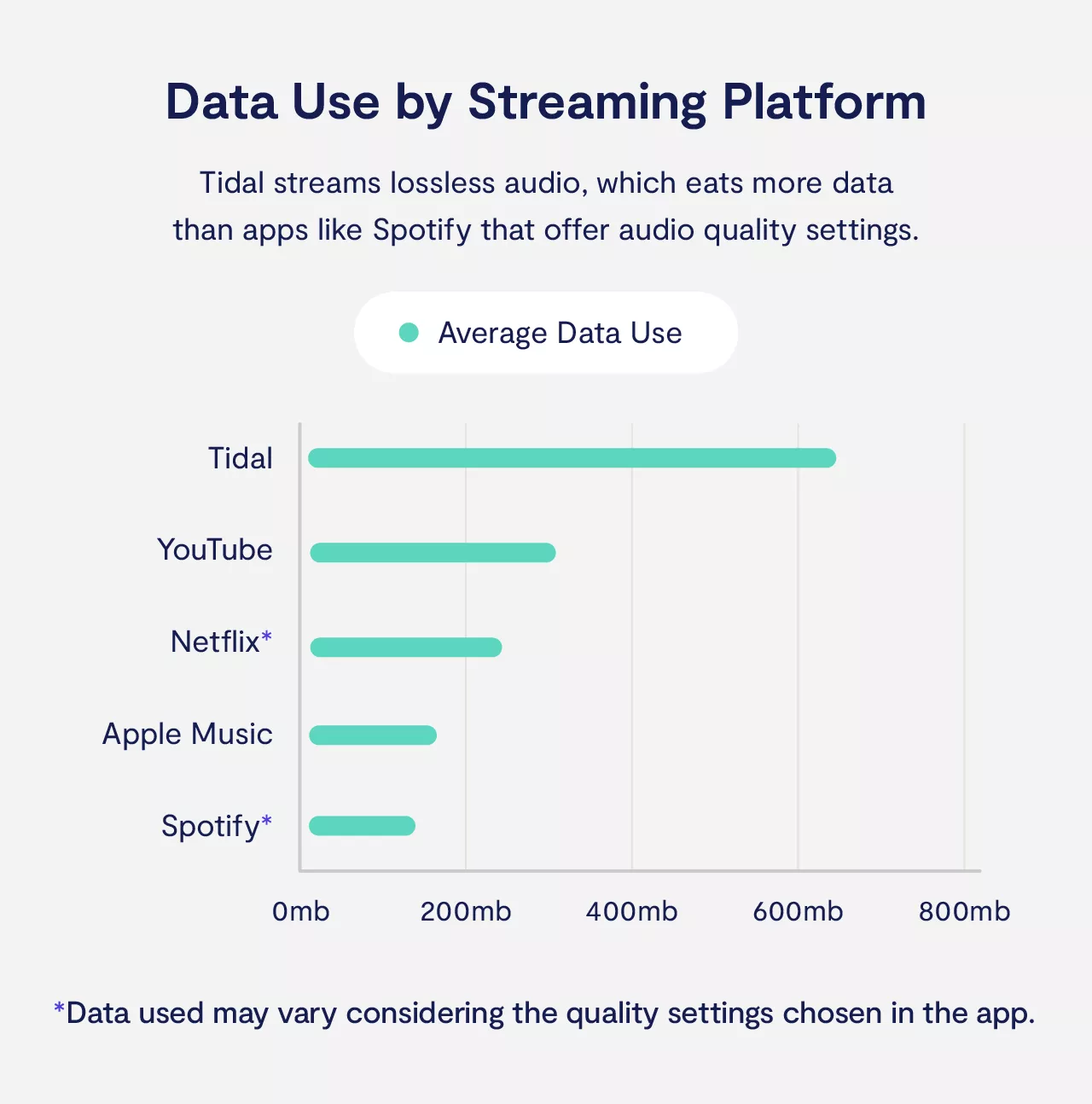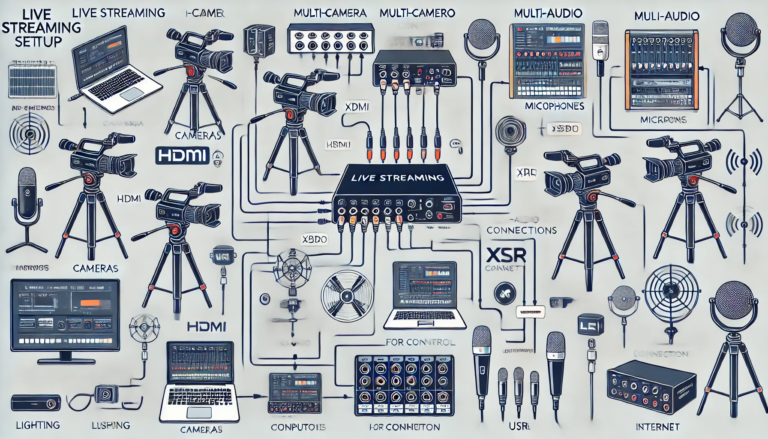How Much Bandwidth Does Streaming Use: Essential Insights
Streaming has become a big part of our daily lives. But how much bandwidth does it use?
Streaming video and music can use a lot of data. Knowing the bandwidth needed can help you avoid buffering and extra charges. Whether you stream movies on Netflix, music on Spotify, or live events, bandwidth matters. Different types of streaming use different amounts of data.
HD and 4K videos use more bandwidth than audio streams. Understanding how much bandwidth your favorite activities require helps you plan. This knowledge can save you from surprises on your internet bill. It also ensures a smooth streaming experience without interruptions. Ready to dive in? Let’s explore the details of how much bandwidth streaming really uses.

Credit: resi.io
Introduction To Streaming Bandwidth
Have you ever wondered why your favorite show sometimes buffers endlessly or appears pixelated? The culprit is often bandwidth. Bandwidth plays a crucial role in ensuring smooth streaming experiences. Understanding how much bandwidth streaming uses can help you make better decisions about your internet plan and devices.
Importance Of Bandwidth
Bandwidth is essentially the amount of data that can be transmitted over an internet connection in a given time. It’s like the width of a pipe—wider pipes can carry more water, just like higher bandwidth can carry more data.
Streaming services like Netflix, YouTube, and Twitch rely heavily on bandwidth. Without sufficient bandwidth, your streaming experience can suffer, resulting in buffering, lag, or poor video quality. This makes bandwidth a key factor in your online entertainment.
Imagine watching a live sports event and missing a crucial play because of buffering. Frustrating, right? That’s why having enough bandwidth is important for uninterrupted streaming.
Impact On Streaming Quality
Streaming quality can vary greatly depending on your bandwidth. High-definition (HD) and 4K streaming require more bandwidth than standard definition (SD) videos. For example, Netflix recommends at least 5 Mbps for HD streaming and 25 Mbps for 4K streaming.
Without the required bandwidth, you might experience a drop in video quality. The video may become pixelated or blurry, and you could miss important details. This can be especially annoying during action-packed scenes or live events.
Have you ever tried watching a movie with friends, only to have the video buffer every few minutes? It’s not just annoying; it can ruin the experience. The more people streaming on the same network, the more bandwidth you’ll need to maintain quality.
So, next time your stream buffers or downgrades in quality, check your bandwidth. It might be time to upgrade your internet plan or optimize your network.
How do you manage your streaming bandwidth at home? Share your tips and experiences in the comments below!

Credit: www.mintmobile.com
Factors Influencing Bandwidth Usage
Understanding the factors that influence bandwidth usage is crucial for an optimal streaming experience. Several elements play a role in determining how much bandwidth streaming uses.
Resolution And Quality
Resolution and quality are key factors. Higher resolutions like 4K and HD require more bandwidth. Standard Definition (SD) uses less bandwidth. Streaming in 4K can use up to 7GB per hour. HD streaming might use around 3GB per hour. SD streaming uses approximately 1GB per hour. Choose the right quality based on your internet speed.
Device And Platform
The device and platform used for streaming also matter. Streaming on a smartphone uses less bandwidth than a smart TV. Different platforms have varying bandwidth requirements. YouTube, Netflix, and Hulu each have their own streaming protocols. These protocols affect how much data is consumed. Be aware of these differences to manage your bandwidth better.
Standard Streaming Resolutions
Streaming at standard resolutions like 480p, 720p, and 1080p uses varying bandwidth. Standard definition (SD) typically requires about 1. 5 Mbps, while high definition (HD) needs around 5 Mbps.
Streaming content online has become a staple in our daily lives. Whether it’s binge-watching your favorite series, streaming a live event, or enjoying a movie night, understanding the bandwidth needed for different streaming resolutions can help you manage your internet usage effectively. Let’s dive into the bandwidth requirements for standard streaming resolutions: SD, HD, and 4K.Sd
Standard Definition (SD) is the most basic level of video quality. It’s usually 480p resolution, making it less demanding on your bandwidth. An SD stream typically requires about 1 to 3 Mbps. If you have a slower internet connection, SD is your best bet for a smooth viewing experience.Hd
High Definition (HD) offers a significant upgrade in video quality compared to SD. With resolutions of 720p or 1080p, HD streaming provides clearer and more detailed images. To stream in HD, you need a bandwidth of around 5 to 8 Mbps. Most modern internet connections can handle HD streaming without issues, but it’s always a good idea to check your speed.4k
4K, also known as Ultra High Definition (UHD), delivers the highest quality video experience. With a resolution of 2160p, 4K streaming requires a lot more bandwidth. Expect to need at least 25 Mbps for a seamless 4K stream. If you have a large screen or a 4K TV, this resolution will give you the best visual experience.Bitrate Requirements
Bitrate is crucial in determining the quality and smoothness of your stream. Higher bitrates mean better quality but also higher bandwidth usage. For SD, a bitrate of 1-3 Mbps is sufficient. HD streams usually need 5-8 Mbps. For 4K, you should aim for 25 Mbps or more to prevent buffering and maintain quality. Understanding these requirements can help you decide which resolution suits your internet speed. Imagine you’re watching a live concert. If your internet speed is low, you might opt for SD to avoid interruptions. However, with a faster connection, HD or even 4K will make the experience much more enjoyable. So, next time you stream, consider your bandwidth and choose the resolution that offers the best balance between quality and smooth performance.Popular Streaming Services
Streaming services have become a staple in modern entertainment. They offer vast libraries of content at the click of a button. However, streaming uses bandwidth, which can affect internet performance. Different services use varying amounts of bandwidth. Knowing this helps manage your data and ensure smooth streaming.
Netflix
Netflix is one of the most popular streaming services. It offers content in various resolutions. SD (Standard Definition) uses about 1 GB of data per hour. HD (High Definition) uses about 3 GB per hour. Ultra HD or 4K uses around 7 GB per hour. The higher the resolution, the more bandwidth Netflix uses.
Youtube
YouTube is another widely-used streaming service. It offers content in multiple resolutions. 360p uses around 0.3 GB per hour. 720p HD uses about 1.5 GB per hour. 1080p HD uses around 3 GB per hour. 4K resolution uses up to 7 GB per hour. Like Netflix, higher resolutions use more bandwidth.
Bandwidth For Live Streaming
Live streaming has become incredibly popular. It allows users to broadcast content in real-time. But how much bandwidth does it use? This is a common question among streamers. The answer depends on several factors. The platform you use and the quality of your stream are key factors.
Gaming Platforms
Streaming on gaming platforms like Twitch and YouTube Gaming requires substantial bandwidth. For a smooth experience, you need at least 3 Mbps. This is for standard definition. High definition requires more. At least 5 to 8 Mbps is recommended. This ensures your stream doesn’t lag. It also keeps your viewers happy.
Remember, higher quality streams need more bandwidth. 1080p streams need around 10 Mbps. If you aim for 4K, you need even more. Around 25 Mbps is ideal. Always check your internet speed before you go live. This helps avoid interruptions. Keep your audience engaged.
Social Media Live
Streaming on social media platforms is different. Facebook Live and Instagram Live use less bandwidth. Standard quality streams need about 1.5 Mbps. This is much lower than gaming platforms. High definition streaming needs around 4 Mbps. This makes it accessible for many users.
Social media platforms often compress the video. This reduces the bandwidth needed. But it can affect the quality. Always test your stream quality first. Make sure it meets your expectations. Your audience will appreciate it.

Credit: clario.co
Comparing Different Content Types
Streaming uses significant bandwidth depending on the quality. For example, HD streaming consumes more data than SD. Understanding this helps manage your data plan.
Comparing different content types is essential when discussing how much bandwidth streaming uses. Movies, TV shows, music, and podcasts all have different requirements. Understanding these can help you manage your data usage better and avoid unexpected charges. ###Movies And Tv Shows
Movies and TV shows are probably the most data-intensive content types you stream. High-definition (HD) streaming can use around 3 GB per hour. If you prefer ultra-high-definition (UHD) or 4K, expect this to jump to 7 GB per hour or more. A recent binge-watch weekend of a popular TV series in 4K quality consumed almost 50 GB. If you have a limited data plan, this can quickly add up. Do you really need 4K for that sitcom, or can you switch to HD? ###Music And Podcasts
Music and podcasts use considerably less bandwidth. Streaming music in high quality typically uses around 150 MB per hour. Standard quality can cut this down to about 70 MB per hour. Podcasts are even less demanding. Most podcast episodes, even lengthy ones, won’t exceed 100 MB. Listening to your favorite podcast series all day will barely dent your data allowance. Comparing these numbers, you can see that streaming music and podcasts is less likely to push you over your data limits. Maybe it’s time to explore more podcasts or create a playlist of your favorite tunes. By understanding the different bandwidth requirements for movies, TV shows, music, and podcasts, you can make better decisions about your streaming habits. This way, you won’t be caught off guard by your data usage.Managing Bandwidth Efficiently
Managing bandwidth efficiently is crucial for a smooth streaming experience. High-quality streaming can consume large amounts of data. This can lead to excessive bandwidth use. By managing bandwidth, you can enjoy uninterrupted streaming and avoid extra costs.
Adjusting Streaming Quality
Adjusting the streaming quality can help save bandwidth. Most streaming services offer different quality settings. Lowering the quality from HD to SD can make a big difference. It reduces the data used without major loss in viewing experience. Try using medium or low-quality settings during peak hours. This helps in managing overall bandwidth consumption.
Using Data Saver Modes
Many streaming platforms have data saver modes. These modes are designed to use less bandwidth. Activating these modes can help manage data more effectively. Data saver modes typically reduce video quality and resolution. They also limit background data usage. This ensures that streaming uses less bandwidth. It’s a simple way to stretch your data plan further.
Future Of Streaming Bandwidth
As streaming continues to dominate how we consume content, understanding the future of streaming bandwidth is crucial. With new technologies emerging and challenges on the horizon, the landscape of streaming is set to evolve rapidly. Let’s dive into what the future holds for streaming bandwidth.
Emerging Technologies
Advancements in technology are set to revolutionize streaming. One promising development is 5G, which promises faster speeds and lower latency. This means you could stream high-definition content without buffering, even during peak times.
Additionally, the rise of AI and machine learning will optimize bandwidth usage. These technologies can predict and adjust streaming quality based on your viewing habits and internet speed. Imagine a seamless experience where you never have to adjust settings manually.
Another exciting development is the potential of quantum computing. While still in its infancy, quantum computing could process data at unprecedented speeds. This would dramatically reduce the bandwidth required for streaming, making it more efficient and accessible.
Potential Challenges
Despite these advancements, several challenges could impact the future of streaming bandwidth. One significant issue is the digital divide. Not everyone has access to high-speed internet, which could limit the benefits of new technologies.
Moreover, as more devices connect to the internet, network congestion could become a problem. Think about all the smart TVs, phones, tablets, and even refrigerators that stream content. This increased demand could strain existing infrastructure.
Another challenge is data privacy and security. As streaming services collect more data to optimize performance, the risk of data breaches increases. Ensuring your personal information is protected will be crucial as streaming technology advances.
So, what does this mean for you? Staying informed about emerging technologies and potential challenges will help you make the most of your streaming experience. How do you think these changes will impact your viewing habits? Share your thoughts in the comments below!
Frequently Asked Questions
Does Streaming Use A Lot Of Bandwidth?
Yes, streaming uses a significant amount of bandwidth. High-definition videos consume more data compared to standard definition.
What Is A Good Bandwidth For Streaming?
A good bandwidth for streaming is at least 5 Mbps for HD quality. For 4K UHD streaming, aim for 25 Mbps or higher.
How Many Gb Does It Take To Stream A 2 Hour Movie?
Streaming a 2-hour movie in HD typically uses about 3 to 4 GB of data. Streaming in standard definition uses around 1 to 2 GB.
How Much Bandwidth Does 1080p Streaming Use?
1080p streaming typically uses around 5 Mbps to 8 Mbps. Ensure a stable internet connection for smooth playback.
Conclusion
Understanding your streaming bandwidth usage is crucial. It helps manage internet data. Streaming in HD or 4K uses more bandwidth. Keep an eye on your usage. Adjust your streaming quality to save data. Check your internet plan for better management.
Awareness can prevent buffering and extra costs. Make informed choices for a smoother streaming experience. Happy watching!






